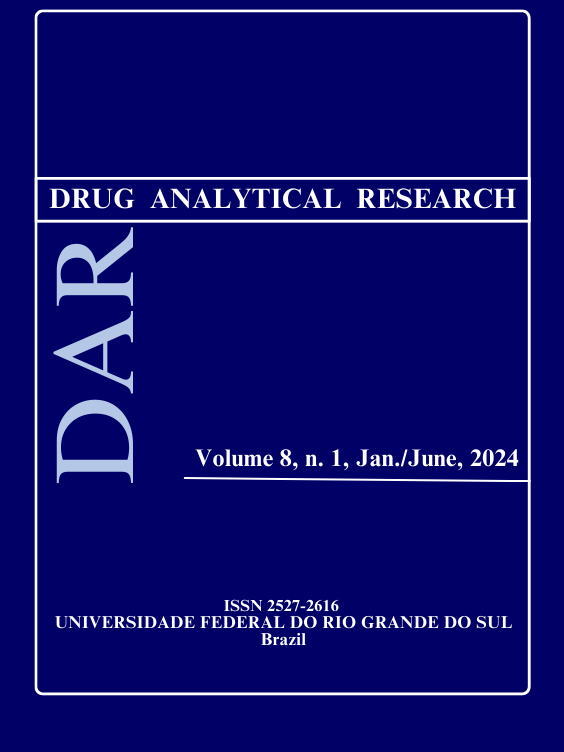Miniaturized Extraction Techniques in Drug Biotransformation Studies by using Endophytic Fungi Cunninghamella elegans
DOI:
https://doi.org/10.22456/2527-2616.140446Keywords:
biotransformation, endophytic fungi, miniaturized techniques, green chemistry, metabolitesAbstract
In addition to predicting biotransformation in humans, drug biotransformation studies are important because they can generate active metabolites or new intermediates with possible use by the pharmaceutical industry. Endophytic fungi of the genus Cunninghamella can metabolize many drugs in a similar way to humans. The analysis of these metabolites requires prior treatment of the samples in order to obtain compatibility with the detection system and the separation technique. This work aimed to study the biotransformation of the drugs duloxetine (DLX), citalopram (CIT) and amlodipine (ANL) by endophytic fungi Cunninghamella elegans ATCC 9245, the development of micro extraction methods in the context of green chemistry, and the validation of the analytical methods for drugs and their respective metabolites. Bioanalytical method by HPLC was successfully developed and validated for both drugs (DLX, CIT and ANL). The metabolites of DLX and CIT obtained by biotransformation studies were not detected in the conditions of this study, but it was possible to visualize one additional peak in the chromatogram analysis of ANL indicate that this drug has been metabolized by Cunninghamella elegans. Furthermore, it has been developed two liquid-liquid micro extraction methods achieving success by removing drugs in both techniques, with recovery greater than 90%. The use of Quality by Design (QbD) through the experimental design provided the best conditions for carrying out biotransformation and micro extraction studies of drugs from the fungal matrix.
Downloads
Downloads
Published
How to Cite
Issue
Section
License
Copyright (c) 2024 Drug Analytical Research

This work is licensed under a Creative Commons Attribution-NonCommercial-ShareAlike 4.0 International License.
The Copyright holder of manuscripts published is Drug Analytical Research. Authors who publish with this journal are able to enter into separate, additional contractual arrangements for the non-exclusive distribution of the journal's published version of the work (e.g., post it to an institutional repository or publish it in a book), with an acknowledgement of its initial publication in this journal.
Licensing:
Creative Commons Attribution-NonCommercial-ShareAlike 4.0 International License
Users are allowed to read, download, copy, distribute, print, search, or link to the full texts of the articles, or use them for any other lawful purpose, without asking prior permission from the publisher or the author.



